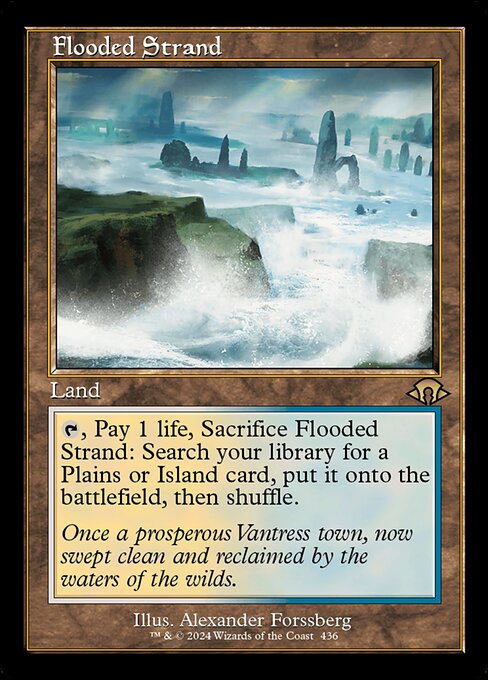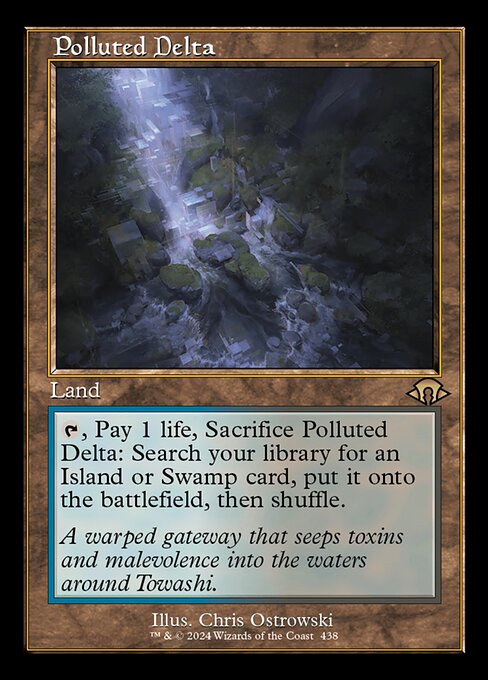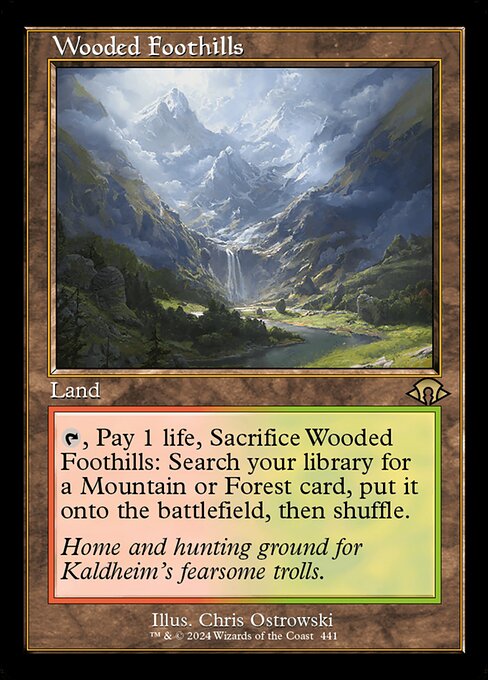Double Masters is a Culmination of the MTG's Past Five Years
Hello everyone! Double Master's release is upon us this weekend. This is an exciting set filled with reprints needed for Modern, Legacy, and Commander. This set has been quite controversial with the high price point of both Draft boxes and VIP boosters and the misinformation surrounding the VIP boosters. Despite this, I believe that Double Masters is a great set. The value is definitely there and you can keep up to date with prices here! If we take a look at the past five years, we should not have been surprised that a set like Double Masters has come in being and how it is a product crafted based on Wizard's monetization of the game. Strap in, this is going to be a long article that covers a lot of MTG history.
Reprint Equity
Before we get started, readers should understand what Reprint Equity is. To explain it quickly, Reprint Equity represents how much value a card brings if it is printed somewhere. A scarely printed card will generally have higher Reprint Equity because it's cost will generally be higher due to low supply of the card. Wizards uses Reprint Equity to drive sales of non-Standard product and carefully makes sure they always have a well of cards that have high Reprint Equity in order to generate hype and drive sales. A good article about this concept was written by Seth at MTGGoldfish here. Understanding how Reprint Equity helps players understand Wizard's mindset when it comes to reprint and explains why they never reprint certain cards.
Prelude: Modern Staples in Standard Sets

In July 2013, Wizards introduced Modern Masters, an exciting set filled with reprints. At the time, the only recourse Wizards had to reprint old cards was to reintroduce them into Standard sets. This was obviously problematic as Wizards could not reprint format-warping cards. So, in other to do this, Wizards introduced it's Modern Masters set. The MSRP on a booster was $6.99, but Wizards underestiamted the demand and these boosters were quickly sold out everywhere. Those that still had inventory were able to mark it up. Despite the frustrations with this product, the set was a success as it was able to bring down card prices.
The following Fall, Wizards released Theros and with it, a Modern staple, was reprinted in the set. This had an amazing effect on Thoughtseize's price. Before Theros' release, Thoughtseize was $60. The reprint didn't completely crush the price, as it was now a format-warping Standard staple now, but the price did fall to ~$35 on release and by the time Thoughtseize rotated in 2015, it was around $30. During it's lifetime in Standard, it heavily impacted the metagame despite the high power level that Khans of Tarkir brought.
I got back into Magic for good in M15, and it was indeed a good time to get back into Magic. Khans of Tarkir brought with it the highly anticipated reprint of the Onslaught Fetchlands. In addition, Khans made these fetchs Modern-legal. Khans of Tarkir was a very high power level set as Wizards printed powerful 3-color cards like Siege Rhino . The Onslaught fetches, prior to the reprint, were going for $40-$50, with the blue ones being closer to $100. The reprints crushed the value of these fetches by ~50% despite the fact they were now needed for Standard. The fetches also impacted the value of the other cards in the set. Siege Rhino
. The Onslaught fetches, prior to the reprint, were going for $40-$50, with the blue ones being closer to $100. The reprints crushed the value of these fetches by ~50% despite the fact they were now needed for Standard. The fetches also impacted the value of the other cards in the set. Siege Rhino , a format staple at the time of it's release, never broke above $10. Sorin, Solemn Vistor, a Mythic, never went over the price of a fetch, while Sarkhan, Dragonspeaker, which was played during the Standard of Khans release, only had a brief moment where it was more expensive than a couple of the non-blue Fetchlands.
, a format staple at the time of it's release, never broke above $10. Sorin, Solemn Vistor, a Mythic, never went over the price of a fetch, while Sarkhan, Dragonspeaker, which was played during the Standard of Khans release, only had a brief moment where it was more expensive than a couple of the non-blue Fetchlands.
Fetchlands would eventually completely warp Standard as BFZ Standard was all 4 color goodstuff decks that were prohibitively expensive.
What did this teach Wizards? Despite crushing reprint prices, Modern format staples should not be reprinted in Standard sets as they would warp formats. Instead of reprinting them in Standard sets, they should be reprinting them in Masters set (Modern Masters completely sold out), which would also have a better profit margin.
Expedition Experiment

I want to keep this in chronological order if I can, so let's discuss Modern Masters 2015. The summer before BFZ dropped, Wizards released Modern Masters 2015, the sequel to Modern Masters. With it, came an MSRP increase of $3/booster. It not too clear if you look at prices now, but Modern Masters was a Mythic-heavy set. There were very few rares that you could crack and make your money back on the price of a pack. However, conversely, if you cracked a Mythic, you were guaranteed to make your money back and get even more. This led to a huge Mythic or bust mentality on the set and I believe that Wizards wanted to see what would happen when you put all the value in the Mythic slot. Despite the high variance of the set and the increased MSRP, Modern Masters 2015 was still well-received.
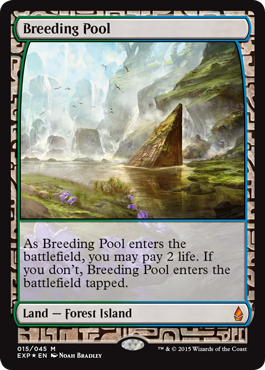
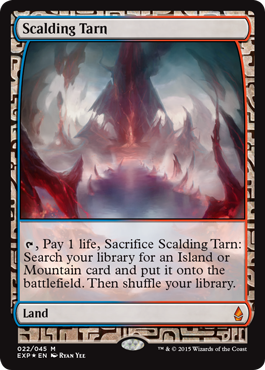

Battle for Zendikar. Here we arrive at Wizards' first real attempt to monetize Wizards via cosmetics. The hype for these lands was amazing. Modern was seeing a real boom and the reprinting of Shocklands and Fetchlands was already desparately needed. It didn't matter that the odds of hitting one of these Expeditions was slim to none; all that mattered was that there was a chance.
Wizard's rationale behind these Expeditions was that they wanted people to have a very small chance for a chance at something amazing; this was previously done with Zendikar's Priceless Treasures. In addition, Standard was a very expensive format; they believed (correctly) that these Expeditions would push down the regular cards in the set. With this set, if it wasn't already clear to players, Wizards proved they understood how EV (expected value) worked in their booster boxes.
Battle for Zendikar, to put it mildly, was a terrible set. The Limited format was abysmal and the cards, outside of a few select Mythics like Gideon, Ally of Zendikar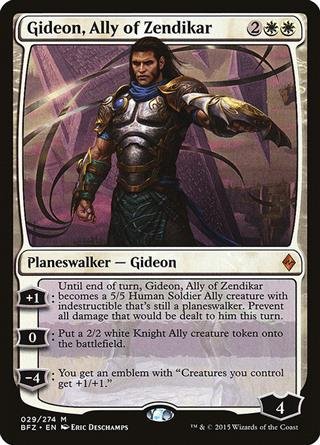 , were very underwhelming, especially following the powerful Khans block. However, it was still one of the most sold sets of all time; Wizards correctly assumed that the return of full-art Zendikar basics and the Expeditions was enough to sell the booster boxes.
, were very underwhelming, especially following the powerful Khans block. However, it was still one of the most sold sets of all time; Wizards correctly assumed that the return of full-art Zendikar basics and the Expeditions was enough to sell the booster boxes.
Rise and Fall of Masterpieces
Expeditions were indeed an experiment as the following spring, the Return to Innistrad block did not feature Masterpieces. These sets sold poorly compared to Battle for Zendikar and Oath of the Gatewatch. Eldritch Moon, despite it's interesting cards, did not sell well. Originally the summer sets did poorly compared to the other sets, but this was the first time a Summer Set was not a Core Set. Eldritch Moon proved that the summer set sold poorly regardless if it was a Core Set or not.
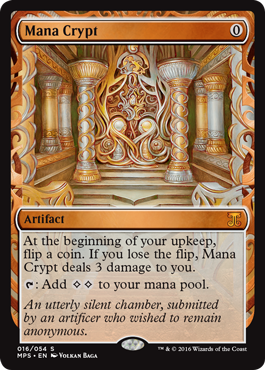
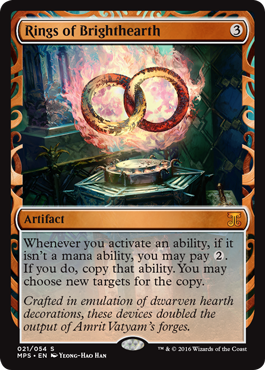
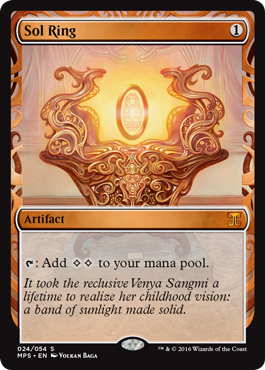
The huge success of Battle for Zendikar convinced Wizards to pull the trigger on including Masterpiece cards in the following sets. Kaladesh, unlike Battle for Zendikar, was a very powerful set that would see play in Standard for the next couple of years and would eventually kick off the trend of banning Standard cards. Despite the prevalence of Kaladesh in Standard, the actual cards in the set were very, very cheap. Mardu Vehicles, a prevalent archetype despite multiple bans, had most of it's Kaladesh block cards be priced extremely low (other course other than the premier colorless vehicles Smuggler's Copter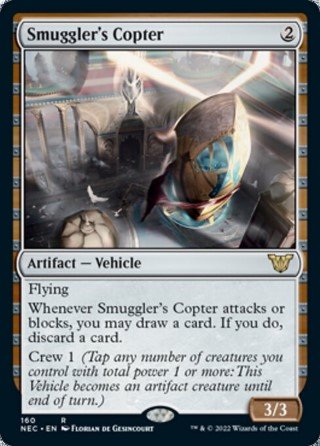 and Heart of Kiran
and Heart of Kiran ). Even the Energy cards that saw a lot more play in Ixalan standard were very cheap; the cheapest, but still competitive Temur Energy only cost $100-$150, with most of price coming from lands and Chandra, Torch of Defiance
). Even the Energy cards that saw a lot more play in Ixalan standard were very cheap; the cheapest, but still competitive Temur Energy only cost $100-$150, with most of price coming from lands and Chandra, Torch of Defiance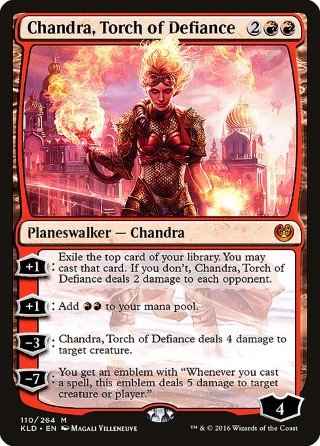 , which saw play in other formats.
, which saw play in other formats.
At this point, the message of clear to Wizards: Masterpieces drove sales of Booster Boxes AND suppressed Standard prices (especially on rares)
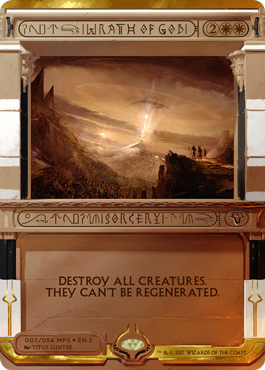
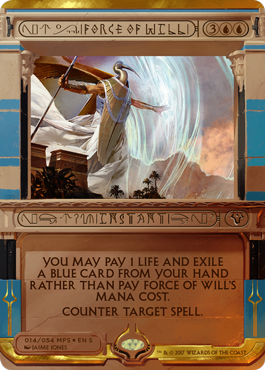
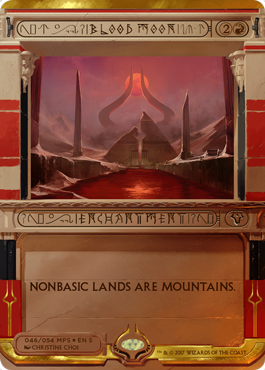
The train rolled on with the release of Amonkhet and everything Wizards thought they had learned about Masterpieces was proven wrong with this block. Wizards rolled back the power level on this set, and they knew this as they included full-art basics in the set to help drive sales. However, players did not receive the Invocations well at all. Players thought the frame was hard to look at, the cards were hard to read, and the art featured on the frames looked small and hard to look at. In addition, there was no clear theme in these cards and players were confused about why certain cards were included. Amonkhet and Hour of Devastation, as a result, sold poorly as the Invocations were not driving the sales. Amonkhet cards were not played in Standard as Kaladesh's cards were way too powerful.
Without the guarantee that Masterpieces would help drive Standard boxes and the list of cards that were able to be printed as Masterpieces shrinking, Wizards pulled the plug on Masterpieces. Ixalan block had art comissioned for Masterpieces, but they were scrapped and used for the flip cards.
Masterpieces in Standard packs were done. Wizards knew there was a demand for them, but there had to be a better way to get these cards to players, while, of course, driving profits. 2/3 was pretty good, but Wizards could not risk having another Masterpiece set be a flop. To be honest, Wizards had multiple ways to fix Masterpieces, but, if you have been following how Wizards likes to do things, Wizards scrapped the project rather than try to improve it for the betterment of everyone.
Masters Series Continues

Eternal Masters was the first divergence from focusing Masters sets on just Modern and included cards played in Legacy. At the time of release, the set wasn't very hyped as players were disappointed with the reprints in the set. In addition, what really crushed the set was the second reprint wave which led to a huge supply of boxes into the market that could not be sold. Despite the value at Mythic like Force of Will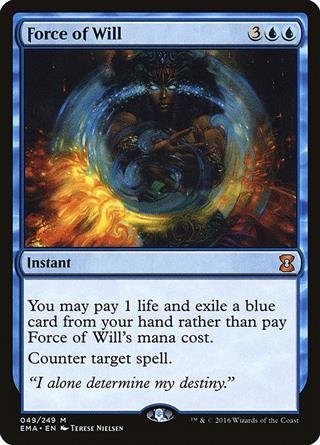 and Karakas
and Karakas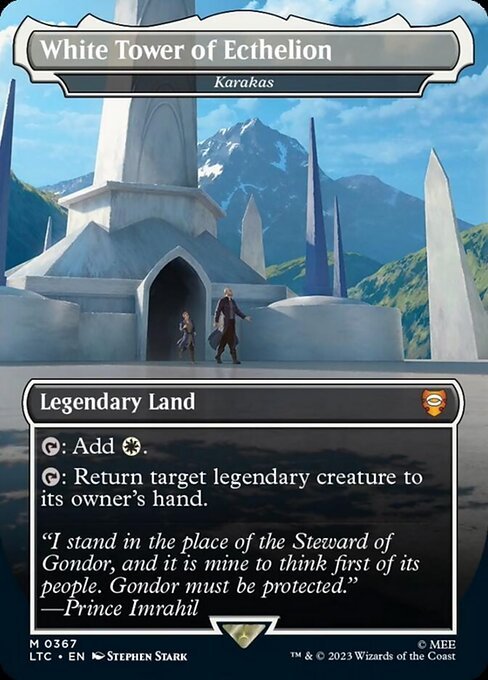 , the Rare slot was filled with duds that led to Eternal Masters being like Modern Masters 2015 as a large variance set to open.
, the Rare slot was filled with duds that led to Eternal Masters being like Modern Masters 2015 as a large variance set to open.

Modern Masters 2017 is still considered one of the best, if not the best, Masters series. The return of Zendikar fetchlands was universally praised by players. MSRP for the set was still at $10/pack, but, before the reveal of the fetchlands, boxes were going for $185-$195. After the announcement of fetches, the prices on boxes shot up to $240. Wizards didn't hold back on the reprints as well and the set ended up selling over it's $9.99 MSRP. Wizards should've learned from this set that players wanted reprints first and foremost and that those reprints drove the sale of boxes.

The next Masters set dropped the following Fall. Unlike previous sets, Wizards previewed this set several months in advance at a GP. Contrary to public opinion, I believe that Iconic Masters did the job as a reprint set quite well. A lot of the cards found in the set were extremely expensive because they were both low-supply and low-demand cards such as Glimpse the Unthinkable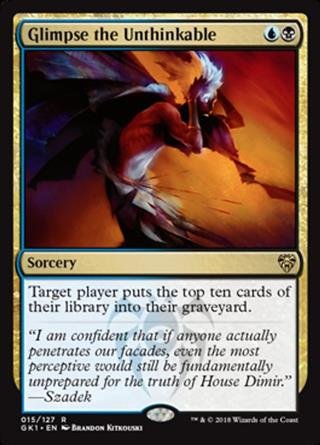 and Auriok Champion
and Auriok Champion . These low-supply, low-demand cards' prices got completely crushed. However, players really did not like the naming of the set and did not buy Wizard's reasoning that Masters' set should be draft-focused.
. These low-supply, low-demand cards' prices got completely crushed. However, players really did not like the naming of the set and did not buy Wizard's reasoning that Masters' set should be draft-focused.

Masters 25 should've been the nail in the coffin for Masters set. Wizards started Masters 25 by apologizing for the poor performance of Iconic Masters and saying that Masters 25 should fix player's perceptions. Boy were they wrong. Masters 25 was supposed to be a set that celebrated 25 years of Magic. Instead, the set was completely filled with duds and Wizards eventually returned to it's reasoning that this was a set that was supposed to be drafted. Players were very vocal about this disconnect this time around and Tree of Perdition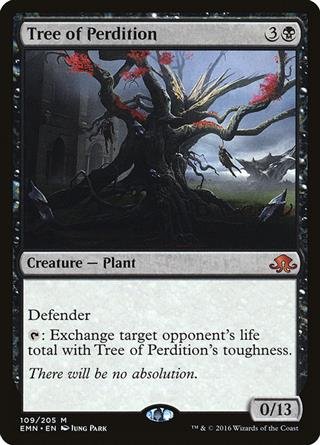 become a meme that stood for how out of touch Wizards was with it's playerbase. Wizards clearly was starting to be stingy with reprints.
become a meme that stood for how out of touch Wizards was with it's playerbase. Wizards clearly was starting to be stingy with reprints.
Mythic Editions
I'd like to continue with the next Masters set, but we need to turn to the Guilds of Ravnica block's Mythic Edition before we discuss Ultimate Masters, which technically started before Ultimate Masters dropped.
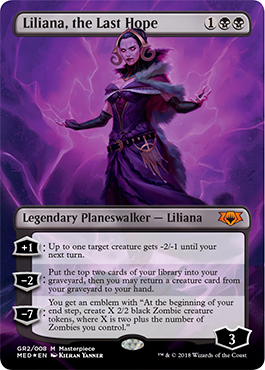
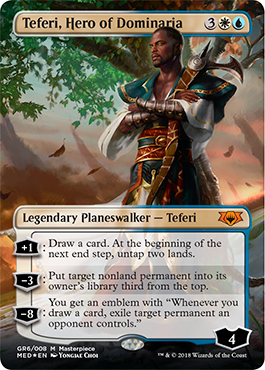
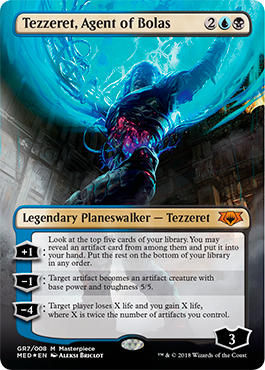
The Mythic Editions were introduced as a way for Wizards to sell Masterpieces directly to players. This was the first time they gave cards the borderless treatment. The Mythic Edition was priced at $249.99 and was sold as 16 Standard packs and then 8 special packs that had one of the Mythic Edition planewalkers in them. The product was sold on the Hasbro store, which players already knew had issues due the sale of SDCC Planeswalkers on them previously. There were numerous problems with the launch of the product as players crashed the servers when the product went live online. Not many players were able to get them and this led to a lot of resentment in the playerbase. But, this proved that, even with the high price point, players were willing to pay for these cards.
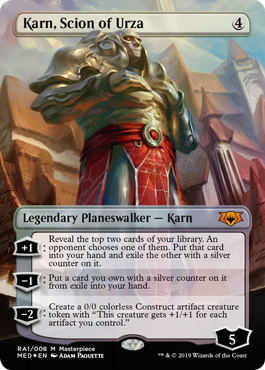
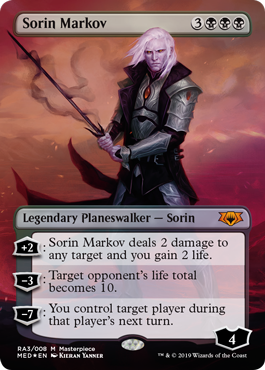
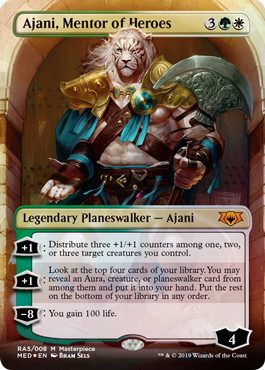
The Ravnica Allegiance Mythic Edition was a dud compared to the first. The Planeswalkers included were very underwhelming and Wizards was actually not able to sell out all their copies of this Mythic Edition. The inclusion of the 3 Ravnica Allegiance Planeswalkers did not help at all as they were not widely played cards save for Kaya, Orzhov Usurper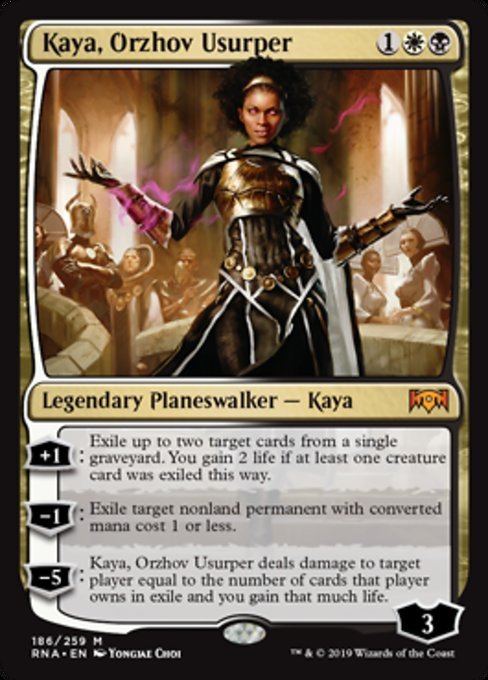 . For this product, Wizards moved to eBay to sell the product.
. For this product, Wizards moved to eBay to sell the product.
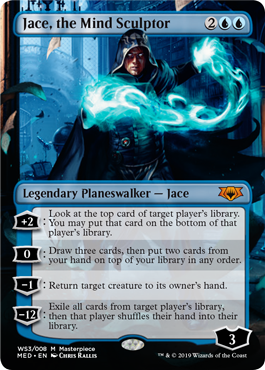
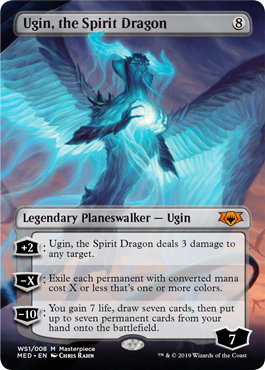
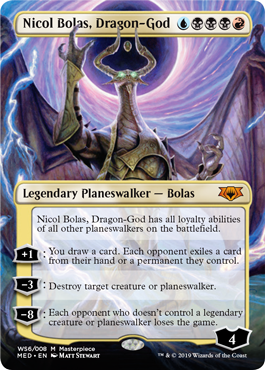
This next one, you may be very familar with. War of the Spark Mythic Edition was very, very hyped as it included not only Jace, the Mind Sculptor , but also Ugin, the Spirit Dragon
, but also Ugin, the Spirit Dragon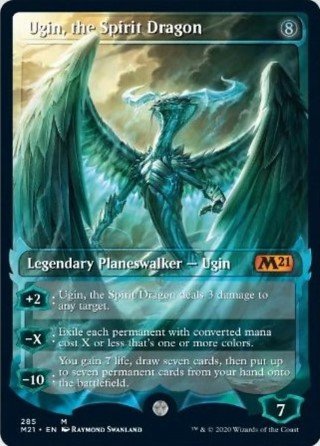 . These 2 cards alone drove the hype of this product. However, the execution on this product was very, very poor. The first batch of Mythic Edition sold out instantly on eBay. However, none of the orders actually went through and Wizards released another wave of the product. Players then bought these out and Wizards continued taking more and more orders. The end result was that Wizards had charged players for the product, but said players would never get the product as it was oversold. The ensuing fallout had Wizards sending out War of the Spark uncut sheets to players and it was a nightmare for both Wizards and the players.
. These 2 cards alone drove the hype of this product. However, the execution on this product was very, very poor. The first batch of Mythic Edition sold out instantly on eBay. However, none of the orders actually went through and Wizards released another wave of the product. Players then bought these out and Wizards continued taking more and more orders. The end result was that Wizards had charged players for the product, but said players would never get the product as it was oversold. The ensuing fallout had Wizards sending out War of the Spark uncut sheets to players and it was a nightmare for both Wizards and the players.
As a result, it made sense that Wizards discontinued the product line, but they learned that they could now distribute basically singles directly to players and that as long as the value was there, players would buy them. And more importantly: players would pay to buy these Masterpiece cards directly. This led to the birth of two products: Secret Lairs and Collector's Boosters, which we will not cover in this article as these products serve different purposes. But I want to state that Collector's Boosters did eventually lead to the VIP edition packs in a way.
Ultimate Masters Truly Was Ultimate

This was the pinnacle of Masters sets. Wizards started this set off with a bang. As compensation to players whose Guilds of Ravnica Mythic Edition orders did not go through, Wizards sent each of them a single Box Topper. At the time, Wizards had not yet announced Ultimate Masters and as players started receiving these Box Toppers, Wizards stated that we would eventually find out what they were. Players were very excited as they saw heavily needed reprints appearing in these Box Toppers.
Quite frankly, Ultimate Masters' success came because it truly encapsulated all of the lessons Wizards had learned in the past 3-4 years. Wizards put a ton of needed reprints in the set. They learned from Masterpieces that they would eat up part of the EV of the box. In addition, players did want Masterpieces, even if they were a low rate, so instead of making it random, they decided to include one in every box as a Box Topper. This made these Box Toppers slightly more common than Masterpieces, but they were still just as exciting.
Ultimate Masters did have an increased MSRP of $13.99, but Wizards' rationale behind it was that the inclusion of the Box Topper was enough to justify it. Players did not like the increased MSRP, but the set was so full of value that it didn't matter. Collectors were also able to get beautiful Box Toppers to bling out their decks too. Ultimate Masters was an exceptional product that Wizards monetized very well and it truly was Ultimate.
The one drawback of this set was that sellers started to sell Sealed Box Toppers separately from their boxes. So they would open the boxes, pull out the Box Toppers, and then sell the packs and the Box Toppers separately. This did have issues as players were quick to discover that the sealed Box Toppers could be searched.
It's really important to understand the reasons behind Ultimate Masters' success as this is the product that eventually led to Double Masters.
Mystery Boosters

The final product to discuss before we get to Double Masters. It's amazing that the Store Edition of Mystery Boosters has already come and gone thanks to CoVid, but we need to discuss this product. Mystery Boosters were first released at MTG Conventions via the Convention Edition before it was released to stores as the Store Edition. Mystery Boosters were first revealed at a GP before being previewed to everybody. For a while, the only way to get these cards were through going to GPs and conventions. After these boosters were made available to stores, prices on the singles dropped. The reception to Mystery Boosters have been very positive. There were a lot of reprints in this set and this set did a very good job at dropping prices for Commander staples, which have now become the primary driving factor in card prices.
When the set was first previewed, I, myself, was very skeptical on what they would do to card prices since there was such a huge pool of cards you could possibly open. The chances of a player opening a certain card was very, very low. A good part of the playerbase shared my sentiment, but as players started playing them at GPs, they were amazed by how much value were in these boosters.
On release, Store Edition boosters were costing about $5, which was cheaper than a Modern Horizons pack. This excellent price point allowed players to easily purchase boxes and led to the set being sold out everywhere. The reason why I wanted to discuss Mystery Boosters is because of how much value was in the set despite there being so many different reprints. In addition, Mystery Boosters had multiple "value" slots, allowing players to open multiple rares/mythics. Even if players didn't open a card that cost more than the pack, they could open multiple medium-value cards and still walk away with some value. And, despite the numerous amount of rare/mythics, EVERYTHING reprinted in the set had it's price come down significantly.
Putting It All Together: Double Masters

And finally, we arrive at Double Masters, the culmination of the past five years. There are players that are calling this set a cash grab from Wizards, especially with the high cost of VIP Edition. Quite frankly, if you haven't been following MTG's history for the past five years, this should not surprise you one bit. It sucks for the players, but Wizards needs to make profits, especially since they have not subsantially increased the price of what we now call Draft Boosters.
For this part of the article, we will use the prices as pulled from our Visual Pricelist!
Double Masters' key gimmick is that players will now get two rares/mythics and two foils in a single pack. This here is why I bought up Mystery Boosters: you DO NOT need to hit a single high value card to make your money back from the booster. At the time of publishing, there are 40 rares/mythics in the set that cost more than the pack. However, there are several cards that cost $3-$4 in the uncommon slot and the fact that you could open two $7 rares to break even on the pack. The value is there; it's just spread out two rare/mythic slots instead of just the normal rare/mythic slot. Wizards is likely experimenting with this model and making adjustments. It costs Wizards the same amount to print any given card. If they can create multiple slots in the pack, while increasing the pack's price, then not only will they be making a higher profit margin, they can cram more $1-$4 cards in the set so that they won't touch cards that have a lot of Reprint Equity like Fetches. Moving forward, if Wizards decides to go down this route, players should be expecting a lot of low-supply and low-demand rares like what was featured in Iconic Masters in the set as the single reprint will crush those cards' prices. Those cards, however, will still have a middle value and won't be bulk, which will keep the set's EV afloat. Double Masters is a very expensive set, but each booster is actually as if players are opening two boosters.
The second piece to discuss is the Box Toppers. If it wasn't clear before in the Ultimate Masters section, Box Toppers is the evolution of Masterpieces in Booster Boxes. During Ultimate Masters season, Wizards definitely noticed the fact that players were cracking the boxes, removing the sealed Box Toppers, and then selling them (for reference, they were selling for about $50-$70). Wizards saw a chance to grab a piece of this pie and hence the VIP Edition was born.
Initially, I was like many players and saw VIP Edition as a blatant cash grab. $100 for a booster, are you kidding me? But, one of my fellow players pointed out that the VIP Edition was literally a Box Topper pack for $100. If players wanted the Box Toppers, they would only need to pay $100 rather than shell out $300 for a box. When it was explained to me like this, I started to see the VIP Edition as Wizards directly selling Sealed Box Toppers. And that is who the VIP Edition is meant for: it's meant for players who want Masterpiece-like cards for their collection. Everything else inside the VIP Edition is meant to disguise it like a Booster, and, although earlier I had stated that Collectors led to VIP Edition in a way, the VIP Edition essentially is a sealed Box Topper pack.
Wizards has learned a lot along the way, but everything about Double Masters is a culmination of what they have learned about monetization in Magic. I, personally, believe that Box Toppers are a great way to sell Masterpieces directly without the earlier variance found in BFZ and Kaladesh and that separating out value in multiple slots in a pack is a great way to lower variance in booster boxes. VIP Edition, despite it's high price point, is actually priced fairly for what it really is: sealed Box Toppers. In addition, with the high amount of rares and mythics in the set, Double Masters will crush their card prices accordingly, so if you are in the market for singles, you can pick up these cards for a fraction of their original price.
I hope you enjoyed this look back at Magic's history and I hope, if you are cracking packs, that you have luck with your pulls. Let me know your thoughts in the comments and thanks for reading!
About Kagros:
Aether Hub News Team member. Writing thoughts on Magic news and fun gameplay!

